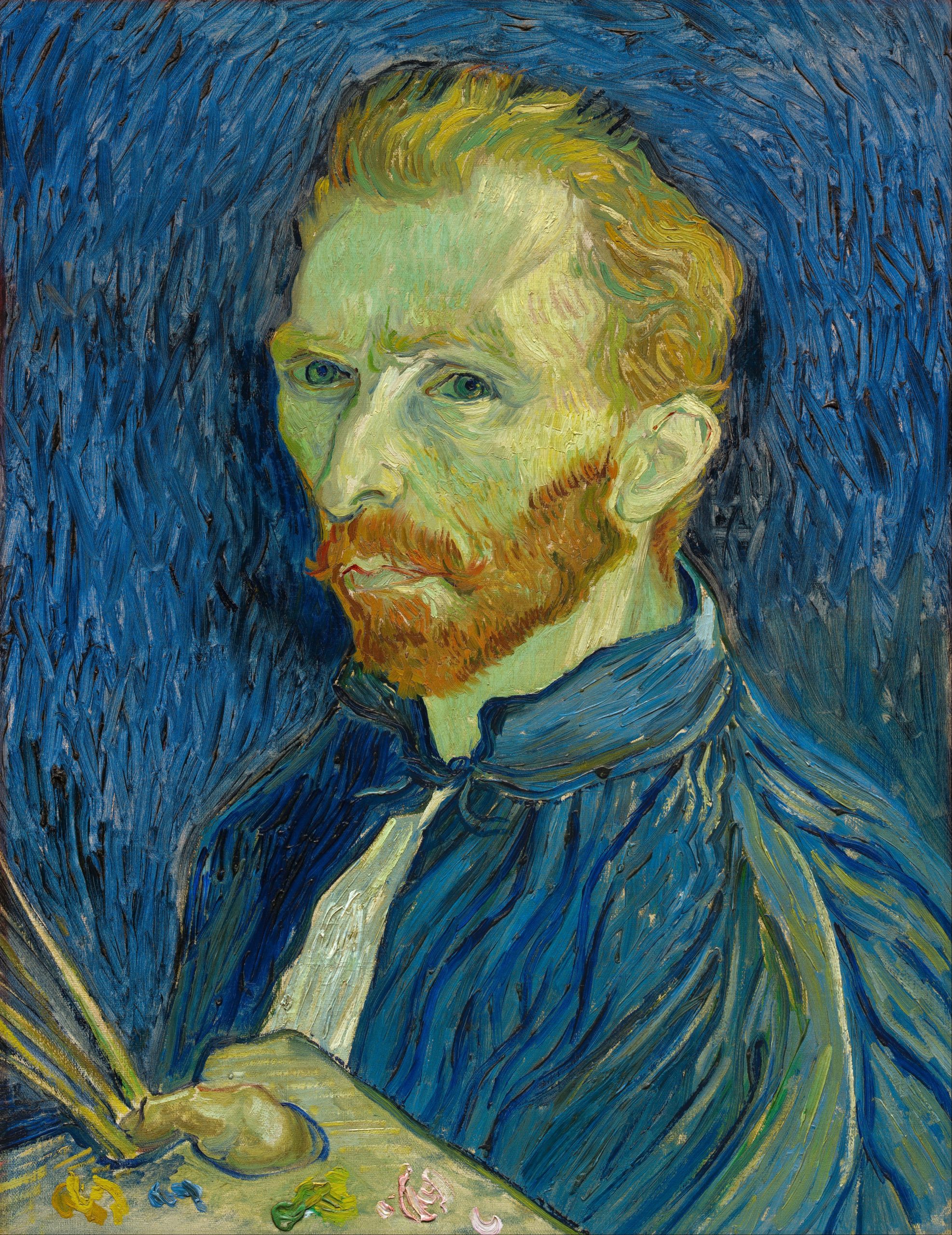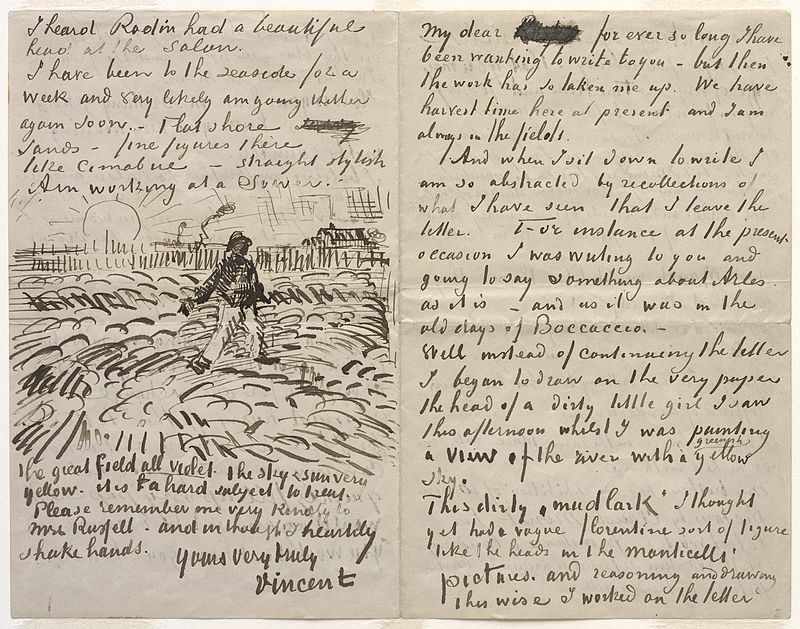Who was Van Gogh?

Vincent Willem van Gogh
Van Gogh was born in 1843 into an upper-middle-class family in Zundert in the Netherlands He drew as a child and was serious, quiet, and thoughtful. As a young man he worked as an art dealer, often travelling, but became depressed after he was transferred to London. He turned to religion and spent time as a Protestant missionary in southern Belgium.
He drifted in ill health and solitude before taking up painting in 1881, having moved back home with his parents. His younger brother Theo supported him financially, and the two kept a long correspondence by letter. His early works, mostly still lifes and depictions of peasant labourers, contain few signs of the vivid colour that distinguished his later work. In 1886, he moved to Paris, where he met members of the avante-garde, including Émile Bernard and Paul Gauguin, who were reacting against the Impressionist sensibility.
As his work developed, he created a new approach to still lifes and local landscapes. His paintings grew brighter in colour as he developed a style that became fully realised during his stay in Arles in the south of France in 1888. During this period he broadened his subject matter to include series of olive trees, wheat fields and sunflowers.
Van Gogh suffered from psychotic episodes and delusions and though he worried about his mental stability, he often neglected his physical health, did not eat properly and drank heavily. His friendship with Gauguin ended after a confrontation with a razor when, in a rage, he severed part of his own left ear. He spent time in psychiatric hospitals, including a period at Saint-Rémy. After he discharged himself and moved to the Auberge Ravoux in Auvers-sur-Oise near Paris, he came under the care of the homeopathic doctor Paul Gachet. His depression continued and on 27 July 1890, Van Gogh shot himself in the chest with a Lefaucheux revolver. He died from his injuries two days later.

Van Gogh was unsuccessful during his lifetime, and he was considered a madman and a failure. He became famous after his death and exists in the public imagination as a misunderstood genius, the artist “where discourses on madness and creativity converge” His reputation began to grow in the early 20th century as elements of his painting style came to be incorporated by the Fauves and German Expressionists. He attained widespread critical, commercial and popular success over the ensuing decades, and he is remembered as an important but tragic painter, whose troubled personality typifies the romantic ideal of the tortured artist. Today, Van Gogh’s works are among the world’s most expensive paintings to have ever sold, and his legacy is honoured by a museum in his name, the Van Gogh Museum in Amsterdam, which holds the world’s largest collection of his paintings and drawings.
Van Gogh’s Letters
The best insight into Vincent Van Gogh is the correspondence between him and his younger brother, Theo. Their lifelong friendship, and most of what is known of Vincent’s thoughts and theories of art, are recorded in the hundreds of letters they exchanged from 1872 until 1890. Theo van Gogh was an art dealer and provided his brother with financial and emotional support as well as access to influential people on the contemporary art scene.
There are more than 600 letters from Vincent to Theo and around 40 from Theo to Vincent. Some are illustrated with sketches. Many are undated, but art historians have been able to place most in chronological order. Theo kept all of Vincent’s letters to him, but Vincent kept few of the letters he received. After both had died, Theo’s widow Johanna arranged for the publication of some of their letters. A few appeared in 1906 and 1913; the majority were published in 1914. Vincent’s letters are eloquent and expressive and have been described as having a “diary-like intimacy”, and read in parts like autobiography. The translator Arnold Pomerans wrote that their publication adds a “fresh dimension to the understanding of Van Gogh’s artistic achievement, an understanding granted to us by virtually no other painter”
Saint-Paul-de-Mausole, St Remy

In the aftermath of the 23 December 1888 breakdown that resulted in the self-mutilation of his left ear, Van Gogh voluntarily admitted himself to the Saint-Paul-de-Mausole asylum on 8 May 1889. Housed in a former monastery, Saint-Paul-de-Mausole catered to the wealthy and was less than half full when Van Gogh arrived, allowing him to occupy not only a second-story bedroom but also a ground-floor room for use as a painting studio.
During the year Van Gogh stayed at the asylum, the prolific output of paintings he had begun in Arles continued. During this period, he produced some of the best-known works of his career, including the Irises from May 1889, blue self-portrait from September, 1889.The Starry Night was painted around 18 June, the date he wrote to his brother Theo to say he had a new study of a starry sky.



